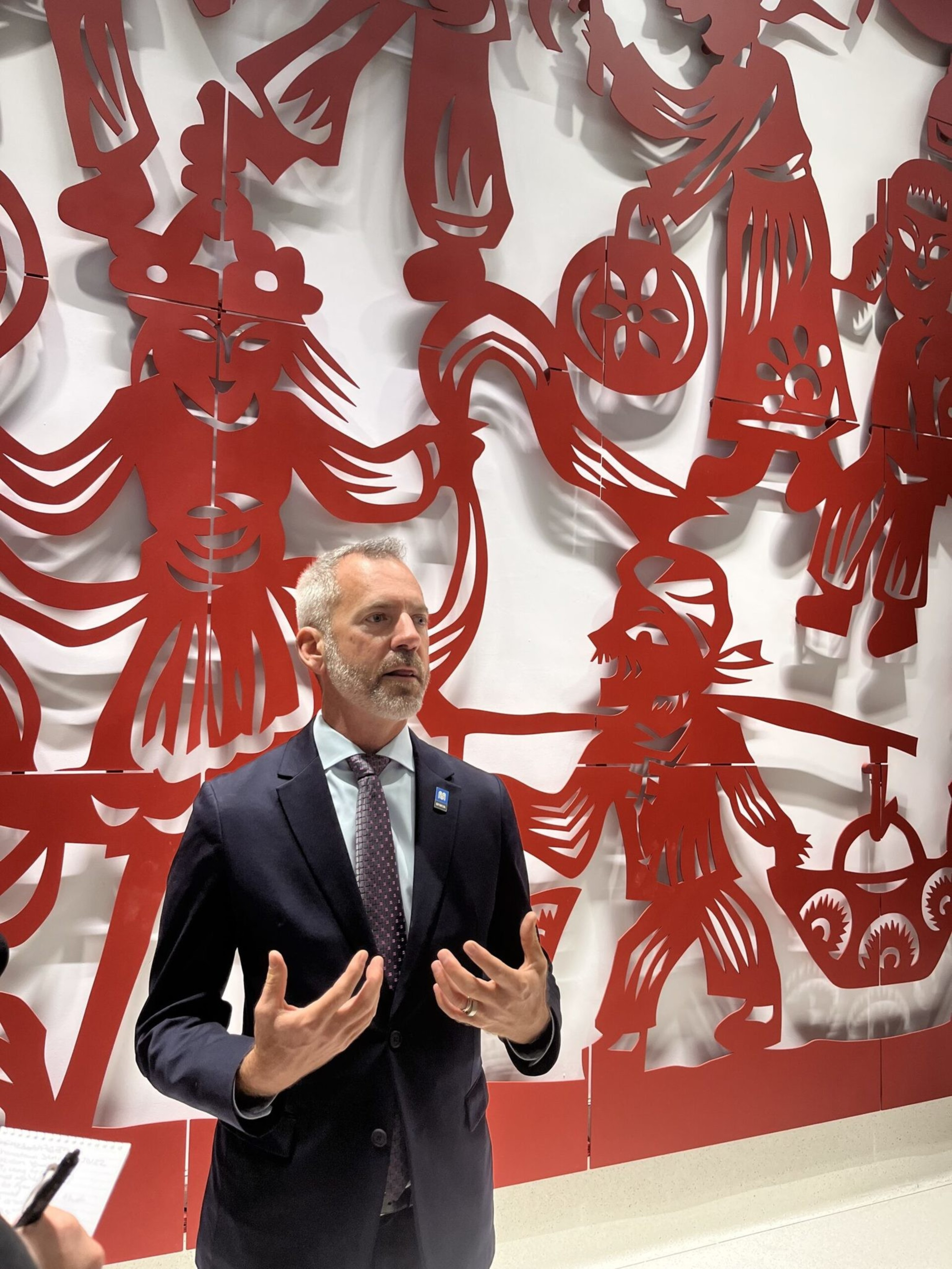A sneak peek of Chinatown’s new subway station revealed towering art installations—and a whole lot of stairs.
But the trains didn’t move an inch on Thursday at a joint event between the San Francisco Arts Commission and the San Francisco Municipal Transportation Agency (SFMTA) celebrating the station and its artwork. The soft opening of the station—officially named Chinatown-Rose Pak station after the famed political power broker—is scheduled for Nov. 19, when trains will carry passengers for the first time on weekends only. The full routes are expected to open on Jan. 22, 2023.
A crowd of Chinatown community members and local leaders heralded the station’s opening on Thursday and got a tour of the new platform and art installations, which include two massive laser-cut metal installations that represent traditional Chinese paper cuts from artist Yumei Hou, who was in attendance Thursday.

Between now and Nov. 19, there are “100 small details” to finish in stations and along the 1.7-mile route, like new lighting on the escalators and final training for Muni staff, said SFMTA Director Jeff Tumlin. There are also fire and police drills planned.
Tumlin said testing and final construction for the $1.953 billion project has gone better than expected so far, and will continue as passengers begin to board next month.
“We have told our crews to test everything,” Tumlin said. “Test until it breaks.”
Trains are expected to leave the station every 12 minutes after the Nov. 19 opening, and more often after that, based on ridership. Tumlin said the above-ground bus routes will remain unchanged as the station opens—but that the new route, connecting the Fourth and Brannan Station all the way up to the intersection at Stockton and Washington streets, will eventually relieve some of the crowding on the 45 Union and 30 Stockton bus routes.
Running north from Chinatown, the tunnel extends all the way to Washington Square Park in North Beach, but there’s currently no station there, said Tumlin. Next under consideration is a possible extension west underneath Geary Boulevard.
Muni ridership today is up to just above 400,000 weekday boardings on average for all modes, just over half of pre-pandemic levels. For light rail, the recovery has been even slower, at just 68,000 average daily riders on weekdays—still well under half pre-pandemic averages.

Tumlin didn’t give a ridership estimate but said the neighborhood’s generally high Muni usage means the agency is expecting a lot of use out of the station.
“Transit ridership in our neighborhoods is strong, and transit ridership in Chinatown has always been strong,” Tumlin said. “So by making transit even better for our highest transit ridership neighborhood, we expect it will help accelerate our overall recovery as we wait for empty offices in Downtown to be full again.”
